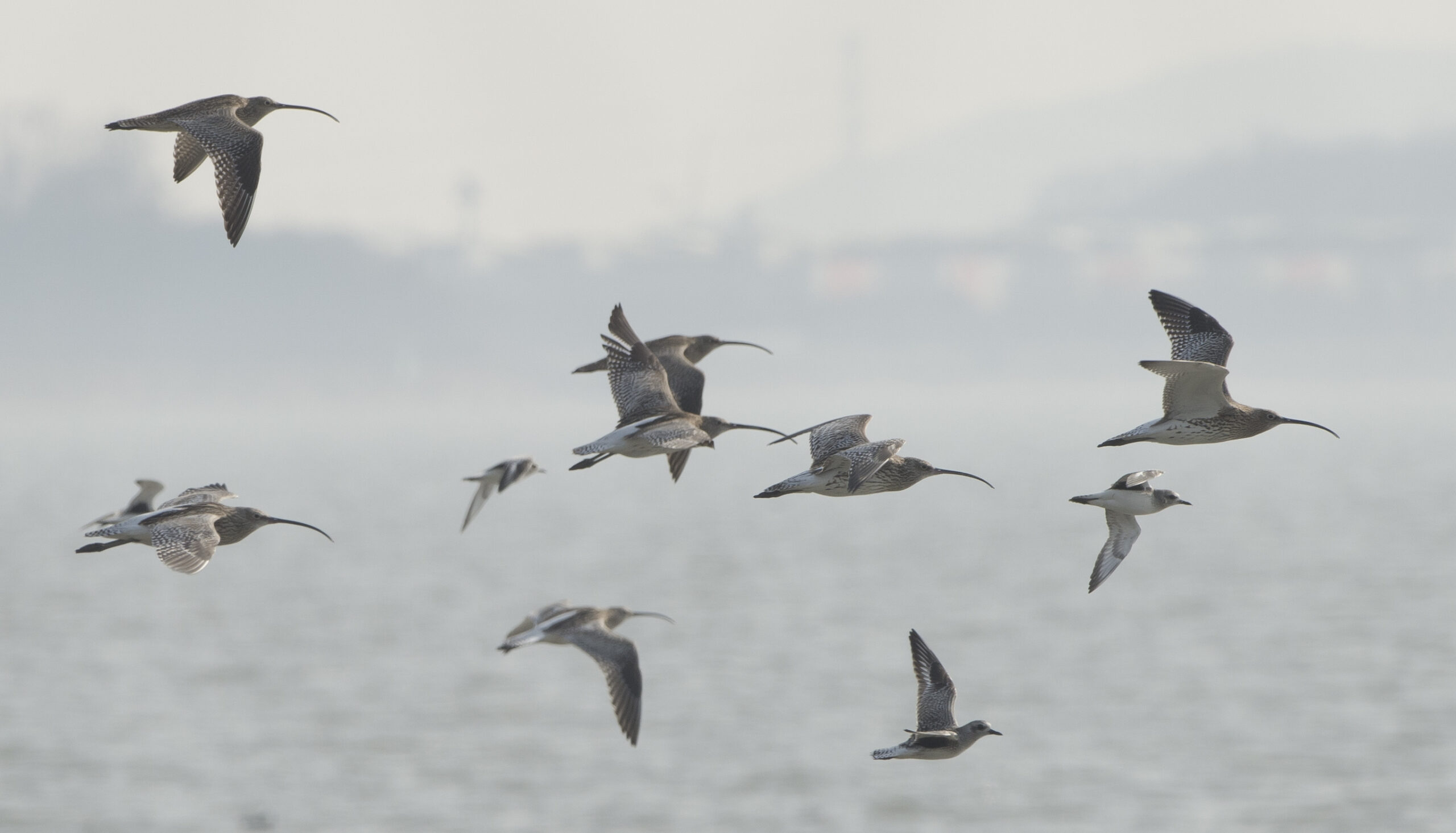
©Eugene Cheah
The Australian Government has extended its support for several key activities of CMS-EAAFP. Four projects of high priority will collectively receive $340,000 (AUD) to address the issue of hunting migratory birds, implement crucial actions as outlined in the Single Species Action Plans for the Far Eastern Curlew and Christmas Island Frigatebird, and contribute to World Migratory Bird Day. The coordination of these projects will be overseen by the CMS Secretariat in close collaboration with the EAAFP Secretariat. This additional support builds upon recent projects supported by Australia and CMS, which focused on quantifying the extent of shorebird take in Eastern Russia and identifying significant sites for the Far Eastern Curlew in Malaysia.
INTERGOVERNMENTAL TASK FORCE TO ADDRESS ILLEGAL HUNTING, TAKING, AND TRADE OF MIGRATORY BIRDS IN THE EAST ASIAN-AUSTRALASIAN FLYWAY
Illegal hunting, taking, and trade of wild birds have led to significant population declines throughout the East Asian-Australasian Flyway (EAAF), impacting threatened species. The impact of direct overexploitation on bird populations in the EAAF remains largely unknown due to insufficient data on many species. Moreover, legal frameworks and enforcement actions aimed at providing tangible protection to these species are often inadequate. The urgent need to address these issues was acknowledged, leading to the establishment of the Task Force during the 12th Meeting of the Conference of the Parties of CMS. A Programme of Work for the Task Force for the period 2023-2027 was endorsed by Task Force members at MoP11 in March 2023. The actions outlined in this Programme of Work seek to strengthen legislative frameworks and enforcement actions against wildlife crime. They also aim to address critical data gaps on hunting and other forms of taking of migratory birds while improving communication channels between stakeholders to enhance collaboration at various scales. Australian support will play a crucial role in coordinating the implementation of the Programme of Work and executing high-priority actions within the flyway.
The Programme of Work is divided into four themes:
- Conservation and Monitoring — Enhance understanding of the scope, scale, motivations, and impacts of illegal take in the EAAF Region.
- Legal and Enforcement Issues — Improve comprehension of the legislative framework related to illegal take in the EAAF Region and provide guidance for improvement.
- Education and Public Awareness — Enhance the level of awareness and education regarding illegal take among non-governmental stakeholders and the public in the EAAF Region, encouraging active participation in combating illegal take.
- Fundraising — Increase available resources for tackling illegal take in the EAAF Region.
PRIORITY ACTIONS FOR FAR EASTERN CURLEW AND CHRISTMAS ISLAND FRIGATEBIRD
Both the Far Eastern Curlew and Christmas Island Frigatebird are priority species for the Australian Government in the East Asian-Australasian Flyway (EAAF). Both species are included in Appendix I of the CMS and have International Single Species Action Plans in place to support their recovery. The Far Eastern Curlew is classified as Critically Endangered, and the Christmas Island Frigatebird as Endangered under Australia’s national environmental laws. The EAAFP serves as the sole multilateral forum with a sufficient number of relevant countries available to Australia for promoting the conservation of these migratory birds in our region. Consequently, Australia cannot effectively address domestic conservation outcomes without closely collaborating with regional neighbours to tackle key threats. Any investment in these species within Australia is compromised if measures are not taken to address threats occurring in the rest of the Flyway. High-priority activities outlined in the Single Species Action Plans include enhancing our understanding of distribution in Southeast Asia, raising local awareness, and mitigating threats in key regions. Projects will conduct Far Eastern Curlew surveys and awareness campaigns in Malaysia and Indonesia. This involves assessing threats and organizing Christmas Island Frigatebird threat mitigation workshops in Southeast Asia, developing local resources to increase awareness of threatened seabirds, and collaborating with local fishermen to conserve Christmas Island Frigatebirds.
WORLD MIGRATORY BIRD DAY 2023
World Migratory Bird Day is an annual global awareness-raising campaign that celebrates the journeys of migratory birds, aiming to inspire worldwide conservation of migratory birds and their habitats. Traditionally observed on the second Saturday of May and October, the two days of World Migratory Bird Day reflect the cyclical nature of bird migration and the varying peak migration periods in the northern and southern hemispheres. This campaign is a collaborative effort involving the CMS, the African-Eurasian Migratory Waterbird Agreement (AEWA), Environment for the Americas, and the EAAFP. The recent addition of the EAAFP to this partnership will enhance engagement and awareness for migratory birds in the East Asian-Australasian Flyway.
World Migratory Bird Day 2023 focuses on water and its importance to bird life. Water is fundamental to sustaining life on our planet, and virtually all migratory birds rely on water and its associated habitats at some point during their life cycles. Lakes, rivers, streams, ponds, wetlands, and coastal waters are all vital for feeding, drinking, nesting, and as resting and refueling places during long seasonal migrations. Unfortunately, these aquatic ecosystems are increasingly threatened worldwide, impacting the migratory birds that depend on them. The growing human demand for water, along with pollution and climate change, directly affects the quantity and quality of water resources and the conservation status of many migratory bird species. Australia’s contribution will be utilized to support World Migratory Bird Day events, webinars, and the development of resources to raise awareness of threatened migratory birds.




